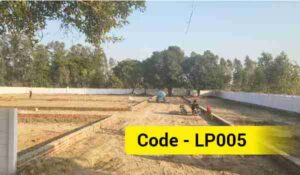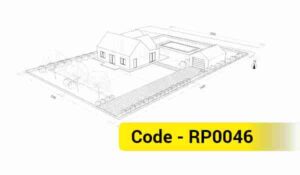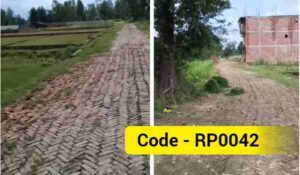Complete Guide to Property Valuation Before a Loan: Know Every Essential Detail!
Are you planning to take a property loan, such as a home loan or a loan against property? Then, understanding the Property Valuation process is crucial. This is the key step where banks or financial institutions assess the current market value of your property to determine the loan amount. But how does this process work? What steps are involved? And what should you keep in mind? In this detailed blog, we’ll break down the entire property valuation process to help you navigate your loan journey with ease and make informed decisions.

What is Property Valuation?
Property valuation is the process through which a bank determines the Fair Market Value of a property. This valuation ensures that the property’s worth is sufficient to secure the loan amount and that the bank can recover its funds by selling the property in case of a default. It not only decides the loan amount but also protects the bank from financial risks.
Key Stages of Property Valuation
The property valuation process is systematic and involves multiple steps. Let’s dive into each stage in detail:
1. Appointment of a Valuator
-
Who Conducts the Valuation? Banks typically hire an independent and licensed property valuator or a third-party agency. These professionals specialize in property valuation and provide an unbiased assessment.
-
Bank’s Panel: Most banks have a pre-approved panel of valuators. In some cases, you may need to pay the valuator’s fee (ranging from ₹2,000 to ₹10,000), depending on the property’s size and location.
-
Importance: An experienced valuator ensures the property’s value is accurate and aligned with market standards.
2. Physical Inspection of the Property
The valuator visits the property to assess its physical condition and characteristics. The following aspects are evaluated:
-
Construction Quality: How robust is the property’s construction? Is it well-maintained?
-
Size and Area: The total area (in square feet or meters) and usable space are measured.
-
Location and Amenities: The property’s location (urban, semi-urban, or rural), access to roads, water, electricity, schools, hospitals, and other facilities.
-
Encroachment: The valuator checks the property’s boundaries to ensure there’s no illegal occupation.
-
Property Age: Older properties may have a lower value due to depreciation.
3. Market Value Assessment
The valuator uses various methods to estimate the property’s market value:
-
Comparative Market Analysis: This involves comparing recent sale prices of similar properties in the same area. For example, if a 2 BHK flat in your area sold for ₹50 lakh, your property’s value may be similar.
-
Income Approach: For income-generating properties (like commercial spaces), the valuation is based on rental income.
-
Cost Approach: The cost of rebuilding the property plus the land’s value is calculated, factoring in the property’s age and depreciation.
-
Market Trends: Analysis of demand, supply, and future development prospects in the area. For instance, upcoming infrastructure like a metro or highway can increase property value.
Read More…
- Uttar Pradesh Building Construction and Development By-Laws 2025
- Laws Governing the Sale of Land by Scheduled Caste Landowners to General Category in Uttar Pradesh
- Understanding Section 80 (Section 143) of the Uttar Pradesh Revenue Code, 2006
- Succession Laws in Uttar Pradesh
- 12 Years of Possession (Adverse Possession) and the Property is Yours? The Complete Story of the Limitation Act and Supreme Court Rulings!
- The Secret of Benami Property Revealed! What Do the Supreme Court and Law Say?
4. Document Review
The valuator verifies all legal documents related to the property to ensure its legitimacy. These include:
-
Title Deed: Proof of ownership.
-
Approved Building Plan: Confirms the property was built per approved regulations.
-
No-Encumbrance Certificate: Ensures no outstanding loans or legal claims exist on the property.
-
Property Tax Receipts: Verifies that no property taxes are due.
-
Land Use Certificate: Confirms the property’s use complies with local zoning regulations (e.g., residential or commercial).
5. Preparation of Valuation Report
Based on the inspection and analysis, the valuator prepares a detailed valuation report that includes:
-
Complete property details (location, size, type, and condition)
-
Valuation method used
-
Estimated market value
-
Comparative property data
-
Photos and observations from the physical inspection
-
Risk factors (e.g., natural disaster-prone areas or potential legal disputes)
6. Loan-to-Value (LTV) Ratio Determination
-
The bank uses the valuation report to offer a loan of 70-90% of the property’s value, depending on its policies, the property type, and the applicant’s credit profile.
-
Example: If your property is valued at ₹1 crore and the bank’s LTV ratio is 80%, you may receive a loan of up to ₹80 lakh.
7. Bank Review and Approval
-
The bank’s internal team reviews the valuator’s report.
-
If discrepancies are found, the bank may request additional verification or a second valuation.
-
Once satisfied, the bank approves the loan amount based on the property’s value and registers the property as collateral (mortgage).
Time and Cost of Property Valuation
-
Time: The valuation process typically takes 3-7 days, depending on the property type and location.
-
Cost: Valuation fees range from ₹2,000 to ₹10,000, usually borne by the loan applicant.
-
Variations by Property Type: Residential properties (like flats or houses), commercial properties, and land may have different valuation criteria.
Tips to Keep in Mind During Property Valuation
-
Transparency: Ensure all property documents are complete and accurate to avoid delays.
-
Reliable Valuator: If the bank allows you to choose a valuator, opt for a reputable and experienced professional.
-
Market Knowledge: Stay informed about recent property sale prices in your area to verify the valuation report’s accuracy.
-
Property Condition: Maintain the property well, as poor condition can lower its value.
-
Legal Verification: Ensure the property is free from legal disputes or outstanding loans.
Why Property Valuation Matters
-
Loan Amount Determination: It decides how much loan you can get.
-
Risk Management: Ensures the bank can recover the loan amount by selling the property in case of default.
-
Applicant Benefit: Accurate valuation helps you secure the right loan amount, avoiding excessive interest burdens.
-
Transparency: The process makes the loan approval transparent, building trust between the bank and the applicant.
Conclusion
Property valuation is a critical part of the loan process, safeguarding both the bank and the borrower. By understanding this process and keeping all necessary documents ready, you can make your loan application smoother and faster. If you’re planning to take a property loan, ensure your property documents are in order and you’re prepared for the valuation process.





















